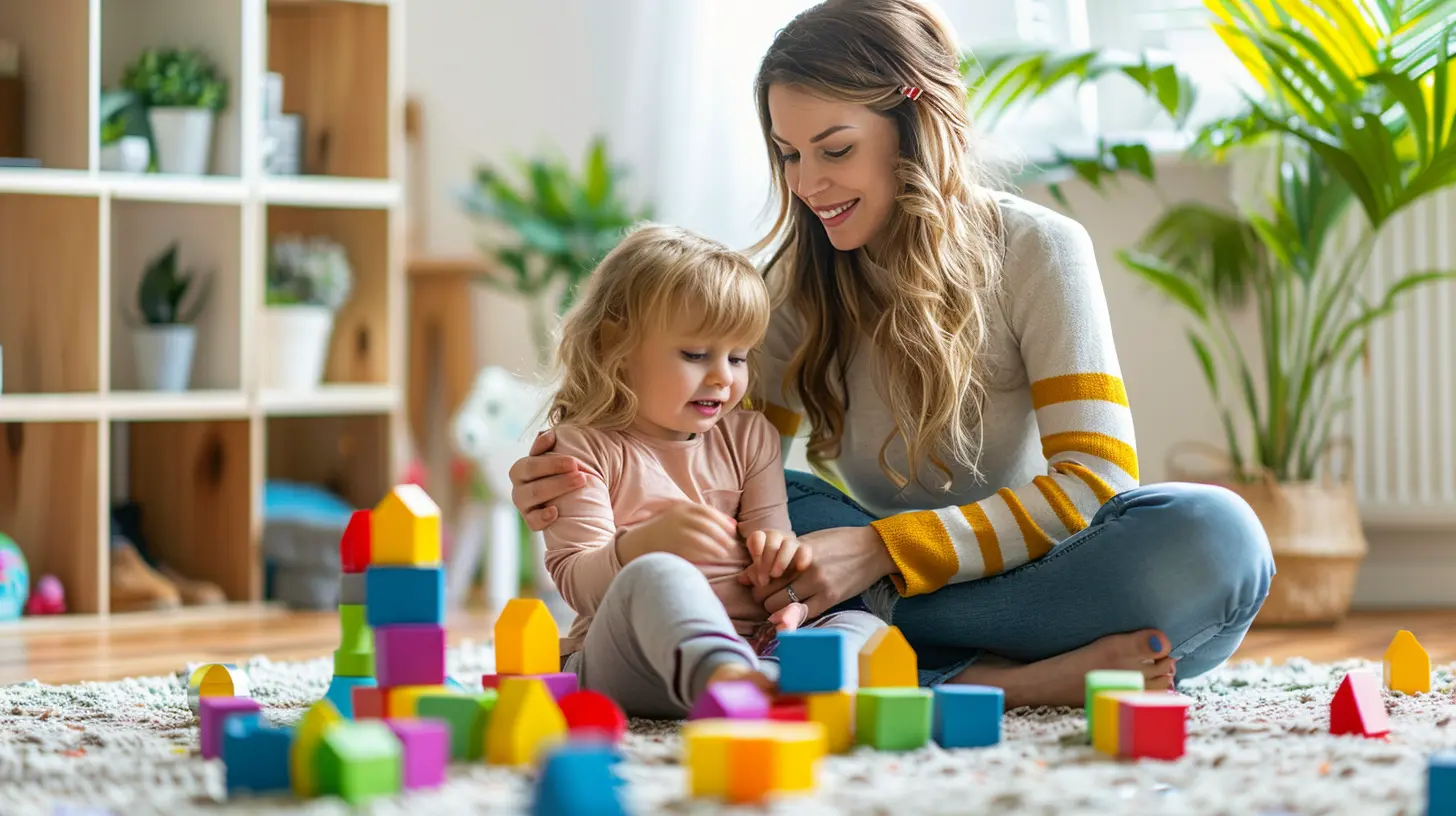The Role of Structure and Routine in Positive Parenting
15 October 2025
Let’s be honest — parenting is beautiful, messy, unpredictable, and, at times, downright overwhelming. Between tantrums, picky eating, bedtime battles, and every “I don’t wanna go to school today,” it can feel like we’re just trying to survive each day. But here’s something many of us overlook: structure and routine can be the superhero sidekicks we didn’t know we needed. They may not wear capes, but they sure do save the day.
In this article, we’re diving deep into the role of structure and routine in positive parenting — how they help build a solid foundation for your child’s development and your sanity.
Why Structure and Routine Matter
Ever notice how kids thrive on repetition? They watch the same cartoon a hundred times and eat the same snack every afternoon like clockwork. That’s because predictable routines help them feel safe, secure, and in control. In a world that’s full of new experiences and overwhelming emotions, routines are like anchors—they ground them.Structure vs. Routine: What’s the Difference?
Let’s clear this up first. While they sound interchangeable, they serve slightly different purposes.- Structure is the framework — the rules, expectations, and boundaries we set.
- Routine is the rhythm — the daily patterns and habits built within that structure.
Think of structure as the skeleton and routine as the muscle. Together, they form a strong, functioning body of parenting.
Benefits of Structure and Routine in Positive Parenting
So what happens when you put structure and routine into play? Magic. Okay, maybe not literal magic, but pretty close. Let’s look at what makes them so powerful.1. Children Feel Safe and Secure
Kids don’t always understand what’s happening in their world. But when they know what’s coming next, it helps them feel in control. Something as simple as a bedtime routine—a bath, pajamas, brushing teeth, bedtime story—can make the day-end transition feel calm and comforting.Wouldn’t you rather wind down than wrestle a child into bed every night?
2. Builds Independence and Responsibility
When routines are established, children start to manage tasks on their own. They brush their teeth without being told, pack their school bag, or put away their toys because it’s part of the schedule. Over time, this predictability fosters independence and self-discipline.Think of it like giving them a roadmap. You’re not saying “Drive wherever you want.” You’re saying “Here’s the lane. Stay in it, and you’ll be safe.”
3. Reduces Power Struggles
No one likes meltdowns and negotiations every five minutes. “But I don’t wanna take a bath!” sound familiar? When your child knows what to expect, there’s less room for arguments. It's not you who’s the bad guy — it’s just the routine.Structure removes the emotional back-and-forth and replaces it with consistent expectations. And let’s face it, that’s a win for both sides.
4. Improves Emotional Regulation
Believe it or not, routines help children manage their emotions better. When kids know what’s coming, they’re less likely to feel anxious or overwhelmed. Transitions (which are often the toughest moments in parenting) become smoother.You know those meltdowns during morning rush hour? Having a routine in place can ease the chaos and help kids start the day with a more regulated mindset.
5. Supports Better Sleep
Sleep. The golden ticket. So many behavior issues can be traced back to poor sleep, and routines are one of the best ways to ensure your child gets the rest they need.A consistent bedtime routine signals the brain that it’s time to wind down, leading to deeper, more restful sleep—not just for your little one, but for you too. Bonus!
How to Create Effective Structure and Routine at Home
Now that we know why it matters, let’s talk how to make it happen. Because “just stick to a routine” is about as useful as “just stay calm when your toddler is painting the dog.”Here’s how to build structure and routines that actually work:
1. Start Small and Keep It Consistent
Don’t overhaul your entire day all at once. Pick a time of day that tends to be the most chaotic—maybe mornings or bedtime—and focus on building a routine around it.Consistency is your best friend here. It’s okay if it's not perfect. The key is repeating the same pattern daily so it becomes second nature.
2. Involve Your Kids in the Process
Kids are more likely to follow a routine if they help create it. Let them choose the order of activities or decorate a routine chart with stickers. When they feel ownership, they’re more invested.It’s like being the co-pilot. They might not be flying the plane, but they’ll follow along better if they know the route.
3. Use Visual Aids
Especially for younger kids, visual schedules are game-changers. Use pictures or colorful charts to walk them through their daily responsibilities. It helps them understand what’s expected even before they can read.Think of it as a daily treasure map. Every task they complete gets them closer to the prize—whether that’s storytime, screen time, or a gold star.
4. Be Flexible When Needed
Life happens. Schedules get thrown off. And that’s okay. The goal isn’t rigidity—it’s rhythm. Don’t be afraid to adapt the routine when needed, especially during big changes (like starting school, a move, or a family emergency).Flexibility within structure is like jazz—it still follows a beat, even if the notes change.
5. Praise Progress, Not Perfection
Remember, routines take time to stick. Celebrate the wins, no matter how small. Did your child put on their pajamas without being asked? High five! Brush teeth without drama? Break out the celebratory dance.Positive reinforcement goes a long way in building lasting habits.
Common Challenges (and How to Tackle Them)
Let’s be real: no parenting method is foolproof. Even with the best-laid plans, there will be bumps in the road. Here’s how to navigate some common challenges:Resistance to Change
Kids might resist new routines at first. No surprise there. But stay calm and consistent. Change takes time, and resistance is just their way of saying, “I’m adjusting.”Use simple language to explain the benefits. “When we brush our teeth every night, our teeth stay healthy and shiny!”
Parental Burnout
Maintaining routines can be exhausting, especially when you’re balancing work, home, and everything in between. Don’t aim for Pinterest perfection — just consistency.Give yourself grace. Even superheroes need a break.
Sibling Schedules
If you’ve got multiple kids, juggling different routines can feel like a circus act. Try to synchronize their routines as much as possible while still honoring each child’s needs.Create family rituals everyone can enjoy together—like reading a bedtime story on the couch or Saturday morning pancakes.
The Ripple Effect of Routines
Still wondering if all this effort is worth it?Here’s the kicker: the benefits of structure and routine don’t just stay in childhood. They ripple into adolescence and adulthood. Kids who learn consistency, responsibility, and emotional regulation are better equipped to handle school, relationships, and real-life challenges.
It’s like planting seeds in a garden. You might not see instant blooms, but over time, with care and consistency, you’ll grow something beautiful.
Real-Life Parenting: What Structure Looks Like in Action
Let’s paint a picture.Imagine your morning without a routine. Everyone’s scrambling, you’re yelling about socks, someone forgot their homework, no one ate breakfast, and by the time you get out the door, you’re already drained.
Now picture this:
- 6:30 AM: Wake up, brush teeth, wash face
- 7:00 AM: Eat breakfast together
- 7:20 AM: Get dressed
- 7:40 AM: Pack bags and review school checklist
- 8:00 AM: Out the door, smiles intact
It’s not perfect every day, but the bones are solid. Less yelling. More connection. A smoother start to the day.
That’s what structure and routine give you—space to breathe, room to enjoy the little moments, and a strong foundation beneath the chaos.
Final Thoughts
Parenting doesn’t come with a manual, but if it did, structure and routine would be on page one. They’re not just for organizing time—they’re for shaping character, building trust, and creating a safe, loving environment where kids can thrive.Start small. Stay consistent. Give yourself grace. You don’t need to be perfect—just present.
Because in the end, positive parenting isn’t about having all the answers. It’s about showing up, creating rhythm in the chaos, and guiding your little humans with love, one routine at a time.
all images in this post were generated using AI tools
Category:
Parenting StylesAuthor:

Zelda Gill
Discussion
rate this article
1 comments
Leona McVeigh
Oh, sure! Because nothing says "fun family time" like a meticulously planned schedule. Who needs spontaneity when you can have a color-coded chart? Pure joy!
October 19, 2025 at 4:39 AM

Zelda Gill
I appreciate your perspective! While spontaneity is important, a structured routine can provide stability and security for families, allowing for both planned activities and spontaneous moments to thrive.


